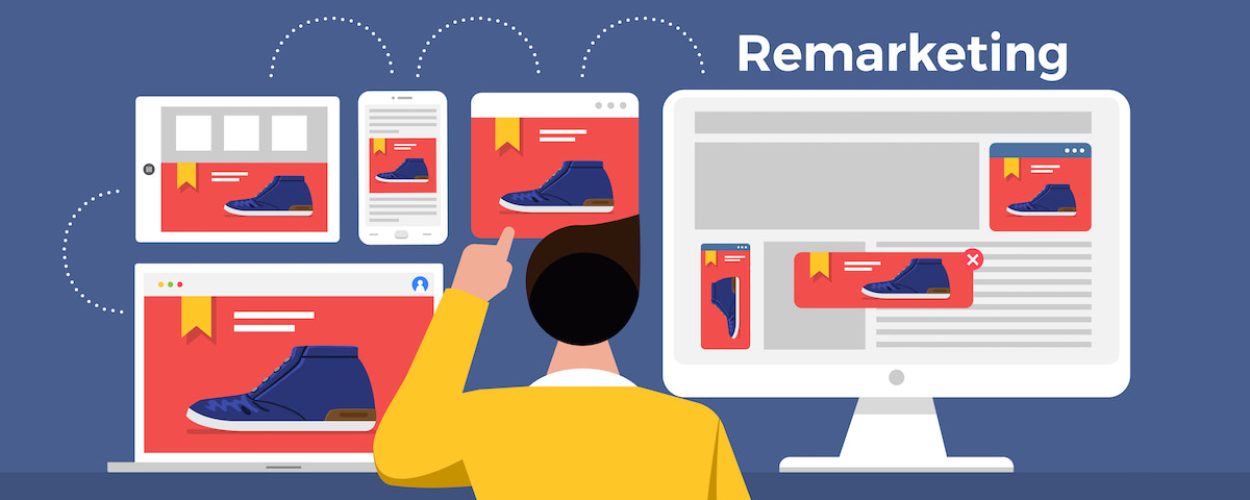RE-MARKETING
Re Marketing for Website
Have you ever visited a website, and then the next day, while browsing online, you saw an ad for the very same website? Or have you ever visited a webstore, added items to your cart, but didn’t check out? Then the next day, while browsing online, you saw an ad featuring the products you left in the cart? Congratulations, you were “retargeted.”
What is Remarketing?
Remarketing, also known as retargeting, is a very common and popular form of digital marketing in which marketers serve ads to users who have visited their website, or a specific web page, and who have or have not taken a specific action. It’s an effective way to target people who have already shown some interest in your business or brand.
Because you are targeting past visitors or existing customers, it’s called “re”-marketing. Think of it as a second chance to convert, up-sell, or retain customers with online ads or campaigns. You can do remarketing in different ways and with different ad platforms, like Outbrain, Google ads, or Facebook ads.
Whichever way you use it, remarketing is an absolute MUST in every marketer’s playbook.
Remarketing remembers all information about your visitors and all actions they have taken on your website:
- Whether they have visited your website
- Whether they have used your app
- What they have shown interest in
- What they have looked at
- Whether they added your product to their cart
- Whether they made a purchase


How Remarketing Works?
It’s not difficult to set up a remarketing campaign for your website. What it requires is pixel installation.
When you create a campaign with a particular ad network, the network will provide you with a small piece of code (called a pixel tag) to add to your website. Every time a new user visits your site, the code will drop an anonymous browser cookie and the user will be added to your retargeting list. When the same user visits another site that hosts display or native ads from your ad network provider, the system will serve your ad to this particular user. This will occur as long as you have an active campaign running.
Google’s move to shut down the use of third-party cookies will impact the ability of marketers to remarket. That’s why it is important to advertise on platforms based on the use of first-party data that allows tracking. The cookieless world is already happening, so start planning now for tools and tactics that will allow you to remarket in the future.
Benefits of Remarketing
Capitalize on lost website traffic.
Target people who have already visited your site and shown interest in your offering.
Target audiences who are more likely to convert.
Keep your brand at top of mind by strategically showing ads to interested audiences.
Affordable marketing tactic available on a range of platforms and channels.
Suitable for every industry and vertical.
Comes in many ad formats, including display ad, search RLSA, dynamic carousel and more.
For e-commerce – dynamic retargeting enables marketers to serve personalized ads for different users based on products or services they viewed on your website.
Remarketing is a great way to increase ROI on your ad spend. If your budget is limited, or if you already feel you’ve paid enough for that first click, you can experiment and finetune your approach for remarketing purposes.
Pro tip: Dig into your data and find out which devices, OS, and even geo locations bring you the highest conversion rate. Create remarketing campaigns according to these segments, and see how they perform. You may well be able to reduce your costs and increase your conversion rate, at the same time.
The reason why visitors to your website didn’t convert is something you can never really know for sure. Maybe they became distracted and simply left. Maybe they didn’t like the offer. Maybe the offer was outside of their budget range. Maybe they are just browsing now, but plan to purchase in a few months. Whatever the reason, retargeting/remarketing is a great way to keep your business or brand at the top of their minds. Keep giving them reminders and reasons to come back. Eventually, they might! Then you’ll be on your way to generating more leads, conversions, and sales for your business.
Remarketing Costs: How Does It Work?
Remarketing typically works on a Cost-Per-Click (CPC) model, as well as CPM (Cost-Per-Impression), and CPA (Cost-Per-Acquisition). This means that you define how much you are willing to pay per click, impression, or conversion, giving you the control to manage your spend and adjust your bids according to the specific remarketing list or campaign.
Remarketing is an effective and cost efficient way to attract customers. This is mainly due to the fact that you are targeting people who have already shown interest in what you have to offer, and are already started on the funnel journey to conversion. With the right targeting and budgeting, you can achieve good results with your KPIs.
Feeling more confident about retargeting now that you’ve read our “dummies” guide? Start a retargeting campaign on Outbrain today.
